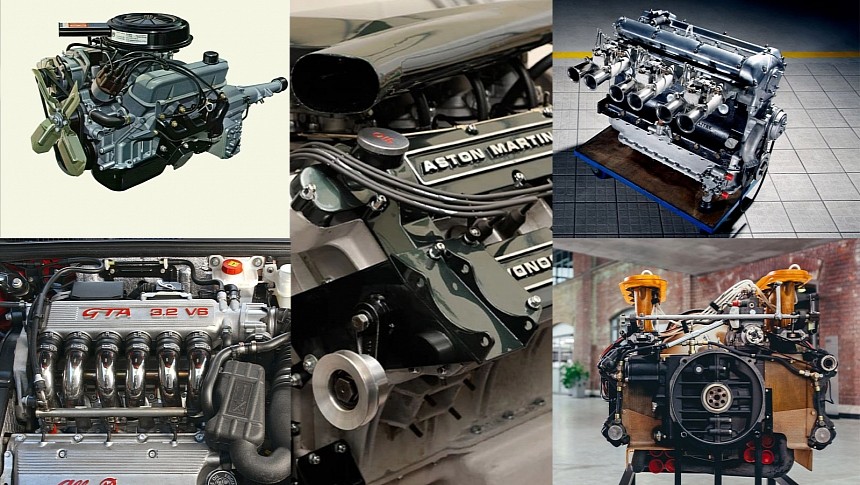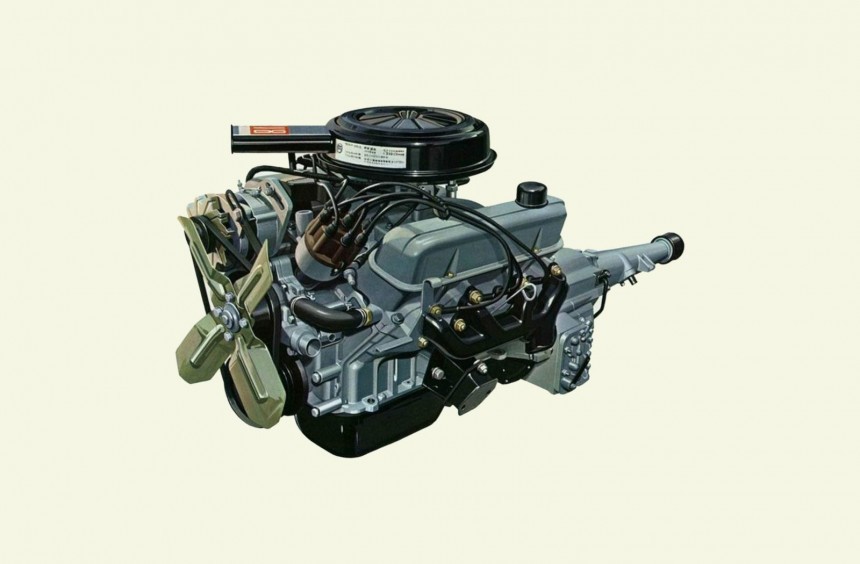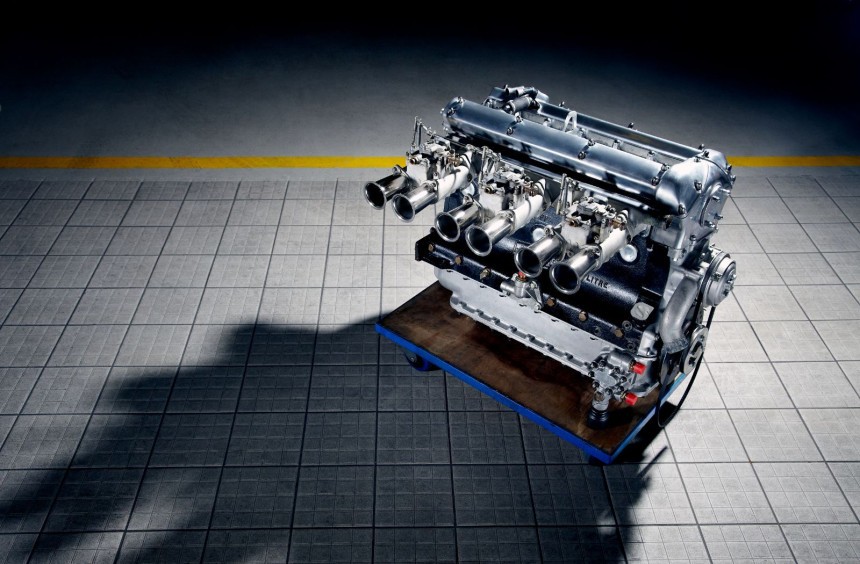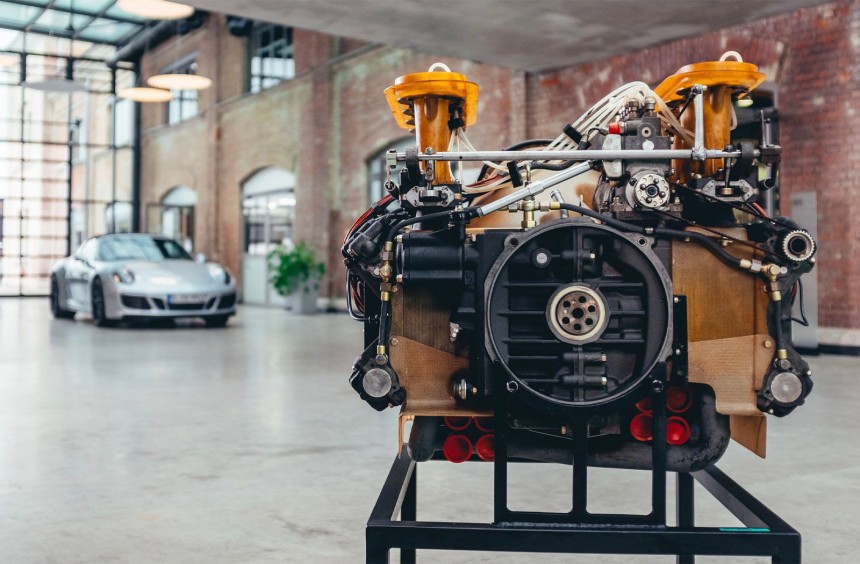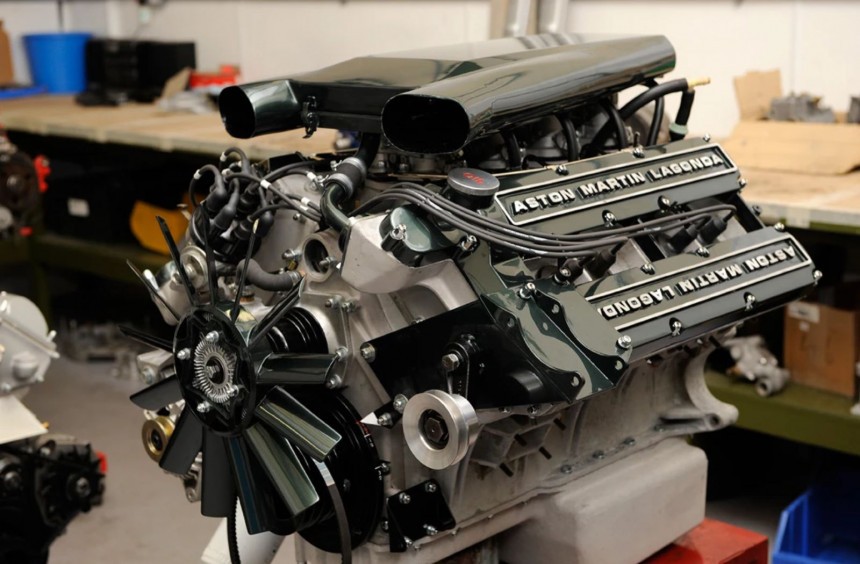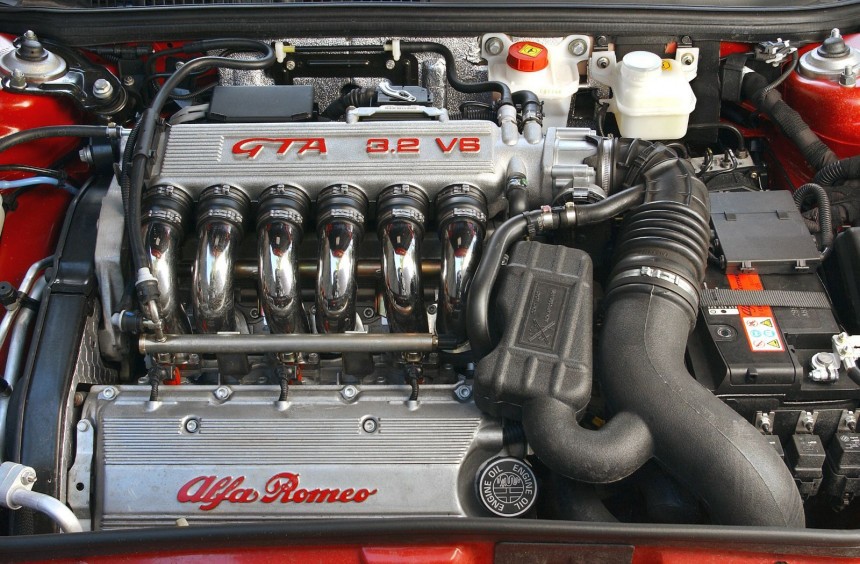Though they're the only engines officially named after their hemispherical combustion chambers, Chrysler's legendary V8s aren't the only mass-produced automotive engines to feature this technology.
Hemispherical combustion chambers have been around since the early days of the 20th Century.
Conceived to maximize the cylinder volume-to-surface ratio, they produce less heat and more power than a conventional flat chamber design.
In the US, Ford and Chrysler began experimenting with hemi heads as early as the 1940s, but the latter corporation would use them extensively in mass-produced motors during the 1950s.
From 1965 onwards, Chrysler applied the hemispherical combustion chamber and the patented HEMI nameplate to its most powerful V8s.
But, while Crysler's potent eight-cylinders became the most renowned powerplants to employ hemi heads, they weren't the only car engines to use them.
In the early 1960s, Toyota began developing an upscale sedan to offer wealthy buyers a home-built alternative to similar American imports.
To challenge those cars, the new model had to be powered by a V8, but until that point, Toyota had never built one.
The Japanese carmaker partnered with motorcycle manufacturer Yamaha and put together an all-aluminum V8 that featured hemispherical combustion chambers.
Codenamed V, but nicknamed Toyota Hemi, the 113-hp, 2.6-liter engine debuted in the 1964 Crown Eight, and from 1967 to 1997, it was used in the company's flagship model, the Century.
During its lifespan, the V engine received numerous revisions that increased displacement from 2.6 to 4.0 liters.
Smaller and lighter than Chrysler's 426 HEMI, Toyota's first mass-produced V8 was also far less powerful, producing 187 hp in its most potent form.
Introduced in 1949, this six-cylinder was one of the first and longest-serving units that used hemispherical combustion chambers.
Until 1992, when it was finally discontinued, the XK6 powered numerous Jaguar models like the iconic XK120 and E-Type.
This British Hemi was also used in the legendary D-Type race car that won the 24 Hours of Le Mans three times in a row during the second part of the fifties.
With displacements ranging from 2.4 to 4.2 liters, it could make between 112 and 265 hp in street-legal form and well over 300 hp in race configuration.
Innovative, lightweight, and extremely reliable, the Jaguar XK6 is still considered one of the greatest inline-six engines ever mass-produced.
Since its establishment in 1931, Porsche has built its reputation by primarily using the horizontally opposed engine configuration.
Unquestionably, its most famous series of horizontally opposed motors was the air-cooled flat-six that debuted in 1963 in the engine bay of the 911.
Initially a naturally aspirated 2.0-liter engine capable of delivering 110 hp, Porshe's flat-six featured hemispherical combustion chambers.
The engine was revised many times throughout the years, receiving multiple improvements like forced induction and DOHC heads.
Nevertheless, most air-cooled versions produced until 1999 continued using hemi chambers.
Porsche's most potent series production air-cooled flat-six was the 444-hp twin-turbocharged unit found in the 993-generation 991 GT (aka the first GT2).
These days, Aston Martin is using Mercedes-AMG engines for its production models and motorsport programs, including Formula 1.
However, there was a time when the iconic British carmaker was developing its own mighty motors.
One of Aston Martin's most iconic engines was the brand's first V8, introduced in 1969 under the hood of the DBS V8.
Initially a 5.3-liter that made a healthy 315 hp, the engine featured DOHC heads with hemispherical combustion chambers.
In the years that followed, the V8 was continually improved, and in some versions, it even received twin superchargers.
The most potent forced-fed Aston Martin V8 that went into production was the Vantage Le Mans V600, which made 600 hp.
Sadly, the engine was discontinued after the 2000 model year. After that, Aston Martin began using Jaguar V8s, then switched to the current Mercedes-AMG powerplants.
Like Aston Martin, the legendary Italian carmaker Alfa Romeo has habitually borrowed engines from other manufacturers in recent decades.
But, back in the 1960s and 1970s, all of Alfa's production models were powered by motors developed in-house.
One of the last great engines Alfa Romeo developed from scratch was a V6 known as Busso.
Designed in the late 1960s by the legendary Giuseppe Busso, the all-aluminum six-cylinder debuted in 1979, two years after the engineer had retired.
It was equipped with a forged, fully counterweighted crankshaft, cast pistons, forged connecting rods, and, of course, hemispherical combustion chambers.
Initially a 2.5-liter, it had a single, belt-driven cam and only made 156 hp. However, Alfa continued improving the V6 in the following years, upgrading it with 12-valve DOHC heads, electronic fuel injection, and even turbochargers.
This mighty Italian engine was buit until 2005, and throughout its lifespan, its displacement increased constantly, reaching 3.5 liters.
During 26 years of service, the Busso was used in many Alfa Romeo models and became known as one of the best-sounding V6 engines ever built.
The most potent production version of the legendary V6 was the 247-hp Bussone (big Busso) that powered the 2002 Alfa Romeo 156 GTA.
Conceived to maximize the cylinder volume-to-surface ratio, they produce less heat and more power than a conventional flat chamber design.
In the US, Ford and Chrysler began experimenting with hemi heads as early as the 1940s, but the latter corporation would use them extensively in mass-produced motors during the 1950s.
From 1965 onwards, Chrysler applied the hemispherical combustion chamber and the patented HEMI nameplate to its most powerful V8s.
But, while Crysler's potent eight-cylinders became the most renowned powerplants to employ hemi heads, they weren't the only car engines to use them.
Toyota V V8
To challenge those cars, the new model had to be powered by a V8, but until that point, Toyota had never built one.
The Japanese carmaker partnered with motorcycle manufacturer Yamaha and put together an all-aluminum V8 that featured hemispherical combustion chambers.
Codenamed V, but nicknamed Toyota Hemi, the 113-hp, 2.6-liter engine debuted in the 1964 Crown Eight, and from 1967 to 1997, it was used in the company's flagship model, the Century.
During its lifespan, the V engine received numerous revisions that increased displacement from 2.6 to 4.0 liters.
Smaller and lighter than Chrysler's 426 HEMI, Toyota's first mass-produced V8 was also far less powerful, producing 187 hp in its most potent form.
Jaguar XK6
Until 1992, when it was finally discontinued, the XK6 powered numerous Jaguar models like the iconic XK120 and E-Type.
This British Hemi was also used in the legendary D-Type race car that won the 24 Hours of Le Mans three times in a row during the second part of the fifties.
With displacements ranging from 2.4 to 4.2 liters, it could make between 112 and 265 hp in street-legal form and well over 300 hp in race configuration.
Innovative, lightweight, and extremely reliable, the Jaguar XK6 is still considered one of the greatest inline-six engines ever mass-produced.
Porsche Air-Cooled Flat-Six
Unquestionably, its most famous series of horizontally opposed motors was the air-cooled flat-six that debuted in 1963 in the engine bay of the 911.
Initially a naturally aspirated 2.0-liter engine capable of delivering 110 hp, Porshe's flat-six featured hemispherical combustion chambers.
The engine was revised many times throughout the years, receiving multiple improvements like forced induction and DOHC heads.
Nevertheless, most air-cooled versions produced until 1999 continued using hemi chambers.
Porsche's most potent series production air-cooled flat-six was the 444-hp twin-turbocharged unit found in the 993-generation 991 GT (aka the first GT2).
Aston Martin V8
However, there was a time when the iconic British carmaker was developing its own mighty motors.
One of Aston Martin's most iconic engines was the brand's first V8, introduced in 1969 under the hood of the DBS V8.
Initially a 5.3-liter that made a healthy 315 hp, the engine featured DOHC heads with hemispherical combustion chambers.
In the years that followed, the V8 was continually improved, and in some versions, it even received twin superchargers.
The most potent forced-fed Aston Martin V8 that went into production was the Vantage Le Mans V600, which made 600 hp.
Sadly, the engine was discontinued after the 2000 model year. After that, Aston Martin began using Jaguar V8s, then switched to the current Mercedes-AMG powerplants.
Alfa Romeo Busso V6
But, back in the 1960s and 1970s, all of Alfa's production models were powered by motors developed in-house.
One of the last great engines Alfa Romeo developed from scratch was a V6 known as Busso.
Designed in the late 1960s by the legendary Giuseppe Busso, the all-aluminum six-cylinder debuted in 1979, two years after the engineer had retired.
It was equipped with a forged, fully counterweighted crankshaft, cast pistons, forged connecting rods, and, of course, hemispherical combustion chambers.
Initially a 2.5-liter, it had a single, belt-driven cam and only made 156 hp. However, Alfa continued improving the V6 in the following years, upgrading it with 12-valve DOHC heads, electronic fuel injection, and even turbochargers.
This mighty Italian engine was buit until 2005, and throughout its lifespan, its displacement increased constantly, reaching 3.5 liters.
During 26 years of service, the Busso was used in many Alfa Romeo models and became known as one of the best-sounding V6 engines ever built.
The most potent production version of the legendary V6 was the 247-hp Bussone (big Busso) that powered the 2002 Alfa Romeo 156 GTA.
